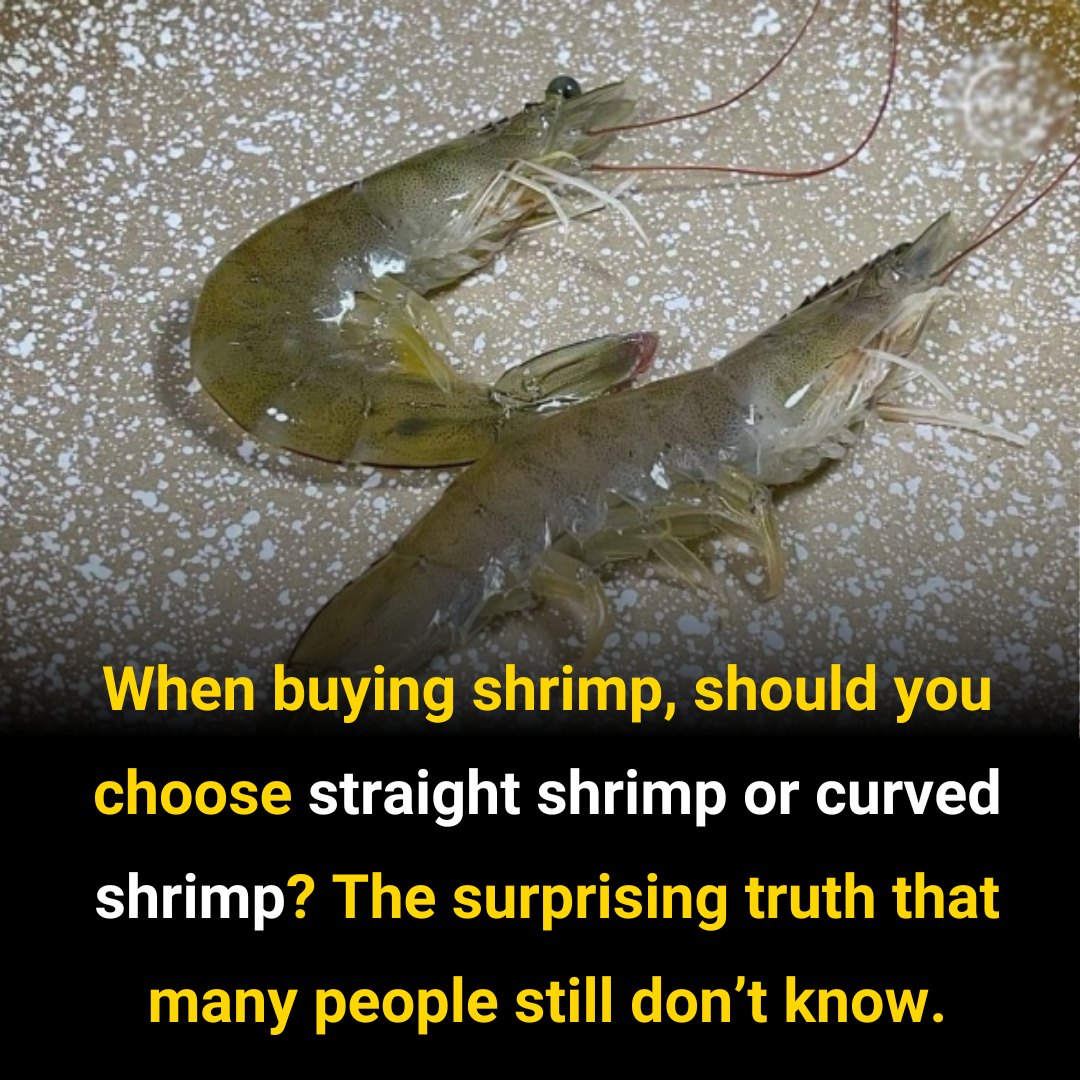When it comes to buying shrimp at the market, many people assume that straight shrimp are always fresher than curved shrimp. But is this common belief actually true? The answer might surprise you! Let’s dive into the key differences between straight and curved shrimp and what you should really focus on when choosing shrimp for your next meal.

Why Do Shrimp Curl?
Shrimp naturally curl after death due to a process called rigor mortis—a phenomenon where the muscles contract after the shrimp is no longer alive. This curling is a natural reaction and doesn’t automatically mean the shrimp is spoiled or old.
However, the way shrimp are stored, frozen, and handled can influence their shape, and this is where the differences between straight and curved shrimp come into play.
Straight Shrimp: Fresh or Frozen?
Straight shrimp are often seen as a symbol of freshness, and there’s some truth to this belief:
- Freshly Caught or Immediately Frozen: Straight shrimp are typically frozen very quickly after being caught, which prevents rigor mortis from setting in.
- Visually Appealing: Straight shrimp often look better when presented in dishes, especially in recipes where appearance matters, like shrimp cocktails or pasta dishes.
- Even Cooking: Straight shrimp tend to cook more uniformly, ensuring a better texture in the final dish.
However, not all straight shrimp are automatically fresh. Shrimp that have been properly frozen immediately after catching can remain straight but may have been sitting in storage for long periods.
Key Takeaway:
Straight shrimp can indicate freshness, but their quality depends more on proper freezing and storage than their shape.
Curved Shrimp: Are They Always Bad?
Curved shrimp often raise concerns because many people associate them with poor storage practices or multiple thawing and freezing cycles. While this can be true in some cases, it’s not a universal rule.
- Natural Process: Curved shrimp can simply be the result of rigor mortis, which occurs naturally after death.
- Improper Storage: Repeated thawing and freezing can cause shrimp to curl unnaturally, and this is often accompanied by signs of spoilage such as off smells, mushy texture, or discoloration.
- Still Edible: If the curved shrimp shows no signs of spoilage—like a bad odor, slimy texture, or unusual coloring—it’s likely still fresh and safe to eat.
Key Takeaway:
Curved shrimp aren’t automatically bad. If they pass the freshness tests (color, smell, texture), they’re perfectly fine to eat.
What Really Matters When Choosing Shrimp?
Whether the shrimp are straight or curved, there are a few universal indicators of freshness you should always check:
- Color: Fresh shrimp should have a translucent, slightly glossy appearance. Avoid shrimp with dull or discolored shells.
- Smell: Fresh shrimp should have a mild, ocean-like smell. Any strong or sour odor is a red flag.
- Texture: The flesh should feel firm, not mushy or slimy.
- Storage Conditions: Shrimp should always be kept cold—either on ice or in a well-chilled environment.
Freshness Over Shape: The Final Verdict
While straight shrimp are often associated with freshness and better visual appeal, they aren’t always fresher than their curved counterparts. Both shapes can be fresh if they’ve been properly frozen, stored, and handled.
When choosing shrimp, focus on smell, color, texture, and storage conditions, rather than relying solely on whether they’re straight or curved.
Quick Shrimp Selection Checklist:
✅ Look for a fresh, ocean-like smell.
✅ Check for a translucent, glossy shell.
✅ Feel for firm, non-slimy flesh.
✅ Ensure shrimp are properly chilled or stored on ice.
✅ Don’t rely solely on whether they’re straight or curved.
By paying attention to these factors, you’ll always bring home the best shrimp for your next delicious seafood dish.





